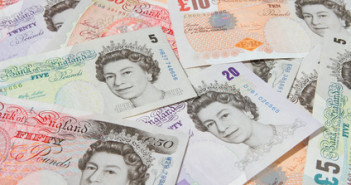The headline stealer this week in currency markets was undoubtedly the British Pound, which enjoyed a massive burst of strength following the release of better than expected CPI data on Tuesday. Inflation in the UK accelerated to +1.9% last month against expectations of a +1.6% reading and last month’s +1.5% (the lowest outcome since November 2009). The result was widely welcomed given UK inflation has been steadily declining since late 2013. However analysts were quick to point out that the rebound could be temporary, driven by one-off factors like beginning of summer retail spending in clothing and footwear.
The CPI numbers catapulted GBPUSD to its highest level since late 2008 near 1.72. Meanwhile GBPEUR confirmed itself above 1.2500 touching its highest level since September 2012. The underlying factor in the GBP demand is expectations of an interest rate hike from the Bank of England (BoE). The BoE maintains a target inflation rate of 2.0%, and Governor Carney has been explicate that he won’t hike rates until inflation is back up to the target rate. This week’s data has revived talk of rate hikes in late 2014 in a big way. It’s worth noting that late week profit taking has led Cable back lower than where it started the week, and is a red flag that additional short term declines might be in the cards for the pair.
UK employment statistics were released a day after the CPI data. While the figures showed that joblessness dropped to 6.5%, its lowest level since March 2009, wages growth underperformed expectations; reading +0.3% against a forecast of +0.5%. This left investors feeling fairly indifferent about the British labour market and Sterling largely ignored the release altogether.
Looking to next week’s data calendar, the front end of the week is fairly light, with American CPI data the only major potentially market moving economic release. Expectations are for prices growth of +0.3%, month-over-month in June. This translates into an annualised number of +2.0%. A reading of 2.0% next week would signal the first time that inflation in the USA has printed on the Federal Reserve’s (Fed) target of the same since early 2013. This would up the pressure on Fed chair Janet Yellen to increase the benchmark lending rate. During testimony this week Yellen singled out inflation as not quite being in a place where rate hikes made sense. A position that would be challenging to maintain should next week unfold as forecast.
Towards the back end of the week, the UK will release June Retail Sales (Thursday) and Q2 2014 GDP (Friday) data. The consensus forecast is that Retail Sales grew by 0.3% in the month of June, while GDP added 0.8% in Q2 of 2014. Data out of the UK has been strong and indicative of a recovery that is moving into full swing. Given that much the British Pound’s recent strength is based on expectations of future rate hikes driving by said data, there is a risk that underperformance next week could leave investors finding it hard to justify buying additional GBP at current levels. GBPUSD in particular looks at risk to such a reversal, via interest rate speculation in the USA, which acts as a counterbalance.
Thursday also sees a host of Purchasing Manufacturer’s Index releases in the Eurozone. Investors will be watching the French results most closely seeing as how recent readings have revealed a state of contraction in both the French Manufacturing and Services sectors. Sentiment in the common currency is already very weak following June’s European Central Bank policy announcement, at which negative deposit rates were announced. Further bad news could easily see pairs like EURUSD and EURJPY move lower.
Further reading:Â Market Movers Podcast Test Episode #7: trading what you see, cooling oil and state of the Fed



